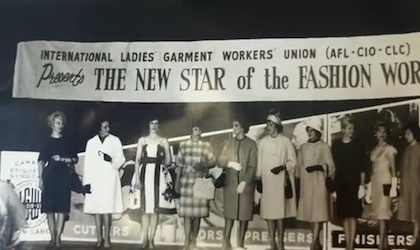Textile Museum of Canada clothes Toronto with its new interactive walking tour
Sue Carter Flinn
I take my hat off to the Textile Museum of Canada’s cool new project, TXTILEcity. Besides giving Torontonians a legit reason to walk down the street stuck to their smartphones, this interactive project uses Google map technology, and video and audio clips to relay the social, cultural, economic and artistic history behind Toronto’s textile and clothing industries.
The museum partnered with the digital arts non-profit Year Zero One and murmur Toronto for this self-directed walking tour of the city. If you’ve experienced murmur’s audio tours before, TXTILEcity works in a similar fashion. There are TXTILEcity signs posted throughout the city’s downtown core. When you see one, call the number and listen to an audio history of that location, its significance to the city and the textile industry. Or, if you are carrying a smart phone, there is an Apple- and Android-friendly app that provides the audio, plus video interviews and archival footage (or you can stay home in air conditioning and access everything from the website or YouTube, but that’s not as much fun as standing on Spadina listening to your own private history lesson).
The content ranges from discussions about Urban Outfitters and the gentrification of Queen Street West to Joe Mimran recalling the first Club Monaco, to the history of the Hudson Bay blanket. At the AGO, curator Michelle Jacques talks about the relationship between contemporary art and textiles through Germaine Koh’s Knitwork. The artist has been unraveling knitwear and re-knitting the yarn into a long, continuously growing worm-like entity since 1992.
But the history of workers rights and activism in the textile industry is the main thread of the tour. For instance, 483 Bay Street (by the Eaton’s Centre) is where the Eaton’s factory used to stand. The conditions were so deplorable that in 1912, 1,000 workers went on a three-month strike. Afterward, some of the organizers opened their own factories on Spadina, marking the beginning of the garment district as we know it today.
Just like the physical Textile Museum of Canada (if you haven’t been there in person, go!), TXTILEcity is an unsung gem, sharing stories and artifacts that otherwise would remain forgotten or ignored.
